Submitted:
31 March 2023
Posted:
31 March 2023
You are already at the latest version
Abstract
Keywords:
Ⅰ. INTRODUCTION
Ⅱ. MICROCOMB-BASED MWP TRANSVERSAL SIGNAL PROCESSORS
Ⅲ. ERRORS INDUCED BY IMPERFECTIONS OF PRACTICAL SYSTEMS
A. Influence of the optical microcombs
B. Influence of the electro-optic modulator
C Influence of the single-mode fibre
D Influence of optical spectral shapers and photodetectors
E Contributions of different error sources
Ⅳ. ERROR COMPENSATION VIA FEEDBACK CONTROL
V. CONCLUSIONS
References
- J. Capmany et al., “Microwave photonics combines two worlds,” Nat. Photonics, vol. 1, no. 6, pp. 319-330, 2007. [CrossRef]
- D. Marpaung et al., “Integrated microwave photonics,” Nat. Photonics, vol. 13, no. 2, pp. 80-90, 2019.
- W. Liu et al., “A fully reconfigurable photonic integrated signal processor,” Nat. Photonics, vol. 10, no. 3, pp. 190-195, 2016. [CrossRef]
- D. R. Solli et al., “Analog optical computing,” Nat. Photonics, vol. 9, no. 11, pp. 704-706, 2015. [CrossRef]
- B. Fischer et al., “Autonomous on-chip interferometry for reconfigurable optical waveform generation,” Optica, vol. 8, no. 10, pp. 1268-1276, 2021. [CrossRef]
- H. Arianfard et al., “Sagnac interference in integrated photonics,” Applied Physics Reviews, vol. 10, no. 1, pp. 011309, 2023. [CrossRef]
- M. Ferrera et al., “On-chip CMOS-compatible all-optical integrator,” Nat. Commun., vol. 1, no. 1, pp. 29, 2010. [CrossRef]
- J. Yao et al., “Fully reconfigurable waveguide Bragg gratings for programmable photonic signal processing,” Journal of Lightwave Technology, vol. 38, no. 2, pp. 202-214, 2019.
- W. Zhang et al., “Photonic integrated field-programmable disk array signal processor,” Nat. Commun., vol. 11, no. 1, pp. 1-9, 2020. [CrossRef]
- N. K. Berger et al., “Temporal differentiation of optical signals using a phase-shifted fiber Bragg grating,” Opt. Express, vol. 15, no. 2, pp. 371-381, 2007. [CrossRef]
- K. A. Rutkowska et al., “Ultrafast all-optical temporal differentiators based on CMOS-compatible integrated-waveguide Bragg gratings,” Opt. Express, vol. 19, no. 20, pp. 19514-19522, 2011. [CrossRef]
- F. Liu et al., “Compact optical temporal differentiator based on silicon microring resonator,” Opt. Express, vol. 16, no. 20, pp. 15880-15886, 2008. [CrossRef]
- J. Wu et al., “Compact tunable silicon photonic differential-equation solver for general linear time-invariant systems,” Opt. Express, vol. 22, no. 21, pp. 26254-26264, 2014. [CrossRef]
- J. Wu et al., “On-Chip Tunable Second-Order Differential-Equation Solver Based on a Silicon Photonic Mode-Split Microresonator,” Journal of Lightwave Technology, vol. 33, no. 17, pp. 3542-3549, 2015. [CrossRef]
- A. Zheng et al., “Fractional-order photonic differentiator using an on-chip microring resonator,” Opt. Lett., vol. 39, no. 21, pp. 6355-6358, 2014. [CrossRef]
- Zheng et al., “Tunable fractional-order differentiator using an electrically tuned silicon-on-isolator Mach-Zehnder interferometer,” Opt. Express, vol. 22, no. 15, pp. 18232-18237, 2014. [CrossRef]
- J. Wu et al., “RF Photonics: An Optical Microcombs’ Perspective,” IEEE Journal of Selected Topics in Quantum Electronics, vol. 24, no. 4, pp. 1-20, 2018.
- Y. Sun et al., “Applications of optical microcombs,” Adv. Opt. Photon., vol. 15, no. 1, pp. 86-175, 2023. [CrossRef]
- S. Mansoori et al., “RF transversal filter using an AOTF,” IEEE Photonics Technology Letters, vol. 16, no. 3, pp. 879-881, 2004. [CrossRef]
- J. Zhang et al., “Photonic true-time delay beamforming using a switch-controlled wavelength-dependent recirculating loop,” Journal of Lightwave Technology, vol. 34, no. 16, pp. 3923-3929, 2016. [CrossRef]
- L. Zhang et al., “Photonic true time delay beamforming technique with ultra-fast beam scanning,” Opt. Express, vol. 25, no. 13, pp. 14524-14532, 2017.
- G. Yu et al., “High-performance microwave transversal filter using fiber Bragg grating arrays,” IEEE Photonics Technology Letters, vol. 12, no. 9, pp. 1183-1185, 2000. [CrossRef]
- D. B. Hunter et al., “Tunable optical transversal filter based on chirped gratings,” Electronics Letters, 31, https://digital-library.theiet.org/content/journals/10.1049/el_19951495, 1995]. [CrossRef]
- Y. Liu et al., “Wideband true-time-delay unit for phased array beamforming using discrete-chirped fiber grating prism,” Optics Communications, vol. 207, no. 1-6, pp. 177-187, 2002. [CrossRef]
- A. Pasquazi et al., “Micro-combs: A novel generation of optical sources,” Physics Reports, vol. 729, pp. 1-81, 2018. [CrossRef]
- L. Chang et al., “Integrated optical frequency comb technologies,” Nat. Photonics, vol. 16, no. 2, pp. 95-108, 2022. [CrossRef]
- X. Xu et al., “Reconfigurable broadband microwave photonic intensity differentiator based on an integrated optical frequency comb source,” APL Photonics, vol. 2, no. 9, pp. 096104, 2017. [CrossRef]
- M. Tan et al., “RF and Microwave Fractional Differentiator Based on Photonics,” IEEE Trans. Circuits Syst. II-Express Briefs, vol. 67, no. 11, pp. 2767-2771, 2020. [CrossRef]
- X. Xu et al., “Photonic RF and Microwave Integrator Based on a Transversal Filter With Soliton Crystal Microcombs,” IEEE Trans. Circuits Syst. II-Express Briefs, vol. 67, no. 12, pp. 3582-3586, 2020. [CrossRef]
- T. G. Nguyen et al., “Integrated frequency comb source based Hilbert transformer for wideband microwave photonic phase analysis,” Opt. Express, vol. 23, no. 17, pp. 22087-22097, 2015. [CrossRef]
- M. Tan et al., “Microwave and RF Photonic Fractional Hilbert Transformer Based on a 50 GHz Kerr Micro-Comb,” Journal of Lightwave Technology, vol. 37, no. 24, pp. 6097-6104, 2019. [CrossRef]
- M. Tan et al., “Highly Versatile Broadband RF Photonic Fractional Hilbert Transformer Based on a Kerr Soliton Crystal Microcomb,” Journal of Lightwave Technology, vol. 39, no. 24, pp. 7581-7587, 2021. [CrossRef]
- X. Xu et al., “Photonic RF Phase-Encoded Signal Generation With a Microcomb Source,” Journal of Lightwave Technology, vol. 38, no. 7, pp. 1722-1727, 2020. [CrossRef]
- M. Tan et al., “Photonic RF Arbitrary Waveform Generator Based on a Soliton Crystal Micro-Comb Source,” Journal of Lightwave Technology, vol. 38, no. 22, pp. 6221-6226, 2020. [CrossRef]
- X. Xu et al., “Photonic Perceptron Based on a Kerr Microcomb for High-Speed, Scalable, Optical Neural Networks,” Laser Photon. Rev., vol. 14, no. 10, 2000070, 2020.
- X. Xu et al., “11 TOPS photonic convolutional accelerator for optical neural networks,” Nature, vol. 589, no. 7840, pp. 44-51, 2021. [CrossRef]
- X. Xu et al., “Microcomb-Based Photonic RF Signal Processing,” IEEE Photonics Technology Letters, vol. 31, no. 23, pp. 1854-1857, 2019. [CrossRef]
- Y. Sun et al., “Quantifying the Accuracy of Microcomb-based Photonic RF Transversal Signal Processors,” to be published, IEEE Journal of Selected Topics in Quantum Electronics. Research Square. [CrossRef]
- J. Capmany et al., “Discrete-time optical processing of microwave signals,” Journal of Lightwave Technology, vol. 23, no. 2, pp. 702-723, 2005. [CrossRef]
- A. Toprak et al., “Impulse noise reduction in medical images with the use of switch mode fuzzy adaptive median filter,” Digital Signal Processing, vol. 17, no. 4, pp. 711-723, 2007. [CrossRef]
- P. J. Marchand et al., “Soliton microcomb based spectral domain optical coherence tomography,” Nat. Commun., vol. 12, no. 1, pp. 427, 2021. [CrossRef]
- T. Herr et al., “Universal formation dynamics and noise of Kerr-frequency combs in microresonators,” Nat. Photonics, vol. 6, no. 7, pp. 480-487, 2012. [CrossRef]
- K. Nishimoto et al., “Investigation of the phase noise of a microresonator soliton comb,” Opt. Express, vol. 28, no. 13, pp. 19295-19303, 2020. [CrossRef]
- A. B. Matsko et al., “Noise conversion in Kerr comb RF photonic oscillators,” J. Opt. Soc. Am. B, vol. 32, no. 2, pp. 232-240, 2015. [CrossRef]
- Y. Fu et al., “Mach-Zehnder: A Review of Bias Control Techniques for Mach-Zehnder Modulators in Photonic Analog Links,” IEEE Microwave Magazine, vol. 14, no. 7, pp. 102-107, 2013. [CrossRef]
- A. Djupsjobacka, “Residual chirp in integrated-optic modulators,” IEEE Photonics Technology Letters, vol. 4, no. 1, pp. 41-43, 1992. [CrossRef]
- B. E. Rogers Iii et al., “Characterization and compensation of the residual chirp in a Mach-Zehnder-type electro-optical intensity modulator,” Opt. Express, vol. 18, no. 2, pp. 1166-1176, 2010. [CrossRef]
- G. H. Smith et al., “Overcoming chromatic-dispersion effects in fiber-wireless systems incorporating external modulators,” IEEE Transactions on Microwave Theory and Techniques, vol. 45, no. 8, pp. 1410-1415, 1997. [CrossRef]
- X. Xu et al., “Photonic microwave true time delays for phased array antennas using a 49 GHz FSR integrated optical micro-comb source Invited,” Photonics Res., vol. 6, no. 5, pp. B30-B36, 2018. [CrossRef]
- Ahn et al., “Synchronization of an optical frequency comb and a microwave oscillator with 53  zs/Hz1/2 resolution and 10-20-level stability,” Photonics Res., vol. 10, no. 2, pp. 365-372, 2022.
- J. Hu et al., “Microwave photonic link with improved phase noise using a balanced detection scheme,” Optics Communications, vol. 370, pp. 1-5, 2016. [CrossRef]
- X. Xu et al., “Self-calibrating programmable photonic integrated circuits,” Nat. Photonics, vol. 16, no. 8, pp. 595-602, 2022. [CrossRef]
- X. Xu et al., “Phase retrieval of programmable photonic integrated circuits based on an on-chip fractional-delay reference path,” Optica, vol. 9, no. 12, pp. 1401, 2022. [CrossRef]
- M. Tan et al, “Orthogonally polarized Photonic Radio Frequency single sideband generation with integrated micro-ring resonators”, IOP Journal of Semiconductors, Vol. 42 (4), 041305 (2021). [CrossRef]
- M. Tan et al., “Photonic Radio Frequency Channelizers based on Kerr Optical Micro-combs”, IOP Journal of Semiconductors Vol. 42 (4), 041302 (2021). [CrossRef]
- Xu, et al., “Advanced adaptive photonic RF filters with 80 taps based on an integrated optical micro-comb source,” Journal of Lightwave Technology, vol. 37, no. 4, pp. 1288-1295 (2019).
- X. Xu, et al., Broadband microwave frequency conversion based on an integrated optical micro-comb source”, Journal of Lightwave Technology, vol. 38 no. 2, pp. 332-338, 2020. [CrossRef]
- M. Tan, et al., “Photonic RF and microwave filters based on 49GHz and 200GHz Kerr microcombs”, Optics Comm. vol. 465,125563, Feb. 22. 2020. [CrossRef]
- X. Xu, et al., “Broadband photonic RF channelizer with 90 channels based on a soliton crystal microcomb”, Journal of Lightwave Technology, Vol. 38, no. 18, pp. 5116 - 5121, 2020. [CrossRef]
- X. Xu, et al., “High performance RF filters via bandwidth scaling with Kerr micro-combs,” APL Photonics, vol. 4 (2) 026102. 2019. [CrossRef]
- M. Tan et al, “RF and microwave high bandwidth signal processing based on Kerr Micro-combs”, Advances in Physics X, VOL. 6, NO. 1, 1838946 (2021). [CrossRef]
- X. Xu, et al., “Advanced RF and microwave functions based on an integrated optical frequency comb source,” Opt. Express, vol. 26 (3) 2569 (2018). [CrossRef]
- Wu, J. et al. RF Photonics: An Optical Microcombs’ Perspective. IEEE Journal of Selected Topics in Quantum Electronics Vol. 24, 6101020, 1-20 (2018).
- X. Xu, et al., “Broadband RF channelizer based on an integrated optical frequency Kerr comb source,” Journal of Lightwave Technology, vol. 36, no. 19, pp. 4519-4526, 2018. [CrossRef]
- X. Xu, et al., “Continuously tunable orthogonally polarized RF optical single sideband generator based on micro-ring resonators,” Journal of Optics, vol. 20, no. 11, 115701. 2018. [CrossRef]
- X. Xu, et al., “Orthogonally polarized RF optical single sideband generation and dual-channel equalization based on an integrated microring resonator,” Journal of Lightwave Technology, vol. 36, no. 20, pp. 4808-4818. 2018. [CrossRef]
- Corcoran, et al., “Ultra-dense optical data transmission over standard fiber with a single chip source”, Nature Communications, vol. 11, Article:2568, 2020.
- X. Xu et al., “Neuromorphic computing based on wavelength-division multiplexing”, 28 IEEE Journal of Selected Topics in Quantum Electronics Vol. 29 Issue: 2, Article 7400112 (2023). [CrossRef]
- Y.Bai et al., “Photonic multiplexing techniques for neuromorphic computing”, Nanophotonics 12 (5): 795–817 (2023). [CrossRef]
- Prayoonyong et al., “Frequency comb distillation for optical superchannel transmission”, Journal of Lightwave Technology 39 (23) 7383-7392 (2021). [CrossRef]
- M.Tan et al., “Integral order photonic RF signal processors based on a soliton crystal micro-comb source”, IOP Journal of Optics 23 (11) 125701 (2021).
- Y. Sun et al., “Performance analysis of microcomb-based microwave photonic transversal signal processors with experimental errors”, Journal of Lightwave Technology Vol. 41 Special Issue on Microwave Photonics (2023).
- M. Tan et al., “18 Tb/s photonic digital signal processor for real time video image processing”, Research Square (2023). https://doi.org/10.21203/rs.3.rs-1775424/v.
- M.Ferrera et al., “CMOS compatible integrated all-optical RF spectrum analyzer”, Optics Express, vol. 22, no. 18, 21488 - 21498 (2014).
- M. Peccianti, et al., “Demonstration of an ultrafast nonlinear microcavity modelocked laser”, Nature Communications, vol. 3, pp. 765, 2012.
- A. Pasquazi, et al., “Self-locked optical parametric oscillation in a CMOS compatible microring resonator: a route to robust optical frequency comb generation on a chip,” Optics Express, vol. 21, no. 11, pp. 13333-13341, 2013. [CrossRef]
- Pasquazi, et al., “Stable, dual mode, high repetition rate mode-locked laser based on a microring resonator,” Optics Express, vol. 20, no. 24, pp. 27355-27362, 2012.
- L. Razzari, et al., “CMOS-compatible integrated optical hyper-parametric oscillator,” Nature Photonics, vol. 4, no. 1, pp. 41-45, 2010. [CrossRef]
- M. Ferrera et al., “Low Power CW Parametric Mixing in a Low Dispersion High Index Doped Silica Glass Micro-Ring Resonator with Q-factor > 1 Million”, Optics Express, vol.17, no. 16, pp. 14098–14103 (2009).
- M. Kues, et al., “Passively modelocked laser with an ultra-narrow spectral width”, Nature Photonics, vol. 11, no. 3, pp. 159, 2017.
- M. Ferrera, et al., “On-chip CMOS-compatible all-optical integrator”, Nature Communications, vol. 1, Article 29, 2010.
- A. Pasquazi, et al., “Sub-picosecond phase-sensitive optical pulse characterization on a chip”, Nature Photonics, vol. 5, no. 10, pp. 618-623 (2011). [CrossRef]
- M. Ferrera et al.“On-Chip ultra-fast 1st and 2nd order CMOS compatible all-optical integration”, Opt. Express, vol. 19, (23)pp. 23153-23161 (2011).
- Bao, C., et al., Direct soliton generation in microresonators, Opt. Lett, 42, 2519 (2017). [CrossRef]
- Duchesne et al., “Supercontinuum generation in a high index doped silica glass spiral waveguide,” Optics Express, vol. 18, no, 2, pp. 923-930, 2010.
- M. Ferrera, et al., “Low-power continuous-wave nonlinear optics in doped silica glass integrated waveguide structures,” Nature Photonics, vol. 2, no. 12, pp. 737-740, 2008. [CrossRef]
- H Bao et al., “Turing patterns in a fiber laser with a nested microresonator: Robust and controllable microcomb generation”, Physical Review Research 2 (2), 023395 (2020). [CrossRef]
- A. Pasquazi, et al., “All-optical wavelength conversion in an integrated ring resonator,” Optics Express, vol. 18, no. 4, pp. 3858-3863, 2010.
- Pasquazi et al., “Efficient wavelength conversion and net parametric gain via Four Wave Mixing in a high index doped silica waveguide,” Optics Express, vol. 18, no. 8, pp. 7634-7641, 2010.
- M. Peccianti et al., “Subpicosecond optical pulse compression via an integrated nonlinear chirper,” Optics Express, vol. 18, no. 8, pp. 7625-7633, 2010. [CrossRef]
- Little, B. E. et al., “Very high-order microring resonator filters for WDM applications”, IEEE Photonics Technol. Lett. 16, 2263–2265 (2004). [CrossRef]
- Moss, D. J. et al., “New CMOS-compatible platforms based on silicon nitride and Hydex for nonlinear optics”, Nature photonics Vol. 7, 597 (2013). [CrossRef]
- H. Bao, et al., Laser cavity-soliton microcombs, Nature Photonics, vol. 13, no. 6, pp. 384-389, Jun. 2019. [CrossRef]
- A. Cutrona et al.,“High Conversion Efficiency in Laser Cavity-Soliton Microcombs”, Optics Express Vol. 30, Issue 22, pp. 39816-39825 (2022). https://doi.org/10.1364/OE.470376. [CrossRef]
- M.Rowley et al., “Self-emergence of robust solitons in a micro-cavity”, Nature 608 (7922) 303–309 (2022).
- R. Holzwarth et al., Phys. Rev. Lett. 85, 2264-2267 (2000).
- P. Del’Haye et al., Nature 450, 1214-1217 (2007).
- S. A. Diddams et al., Science 369, eaay3676 (2020).
- A. L. Gaeta, et al., Nature Photonics 13, 158-169 (2019).
- T. J. Kippenberg et al., Science 361 (2018).
- X. Xue et al., J. Lightwave Technology 32, 3557 (2014).
- P. Trocha et al., Science 359, 887 (2018).
- M. G. Suh, and K. J. Vahala, Science 359, 884 (2018).
- D. J. Jones et al., Science 288, 635 (2000).
- P. Del’Haye et al., Physical Review Letters 107, 063901 (2011).
- S. A. Diddams et al., Phys. Rev. Lett. 84, 5102 (2000).
- T. Tetsumoto et al., Nature Photonics 15, 516 (2021).
- J. Hu et al., Nature Commun. 11, 4377 (2020).
- H. Shu et al., Nature 605, 457-463 (2022).
- M. G. Suh et al., Nature Photonics 13, 25 (2019).
- T. Herr et al., Nature Photonics 8, 145-152 (2014).
- T. Herr, and R. A. McCracken, IEEE Photonics Technology Letters 31, 1890 (2019).
- A. Fulop et al., Nature Commun. 9 (2018).
- P. Marin-Palomo et al., Nature 546, 274 (2017).
- J. Riemensberger et al., Nature 581, 164 (2020).
- T. Hansson, and S. Wabnitz, Nanophotonics 5, 231 (2016).
- S. Fujii et al., Opt. Express 30, 1351 (2022).
- J. Pfeifle et al., Nature Photonics 8, 375 (2014).
- J. Wang et al., Photonics Res. 8, 1964 (2020).
- Obrzud et al., Nature Photonics 13, 31 (2019).
- J. Feldmann et al., Nature 589, 52 (2021).
- M. G. Suh et al., Science 354, 600-603 (2016).
- Wang et al., Nature Communications 4, 1345 (2013).
- W. Liang et al., Optics Letters 36, 2290 (2011).
- S. B. Papp et al., Phys. Rev. X 3, 031003 (2013).
- H. Agha et al., Optics Express 17, 16209-16215 (2009).
- S. Levy et al., Nature Photonics 4, 37-40 (2010).
- Bao et al., Optics Letters 39, 6126-6129 (2014).
- A. Kovach et al., Adv. Opt. Photon. 12, 135-222 (2020).

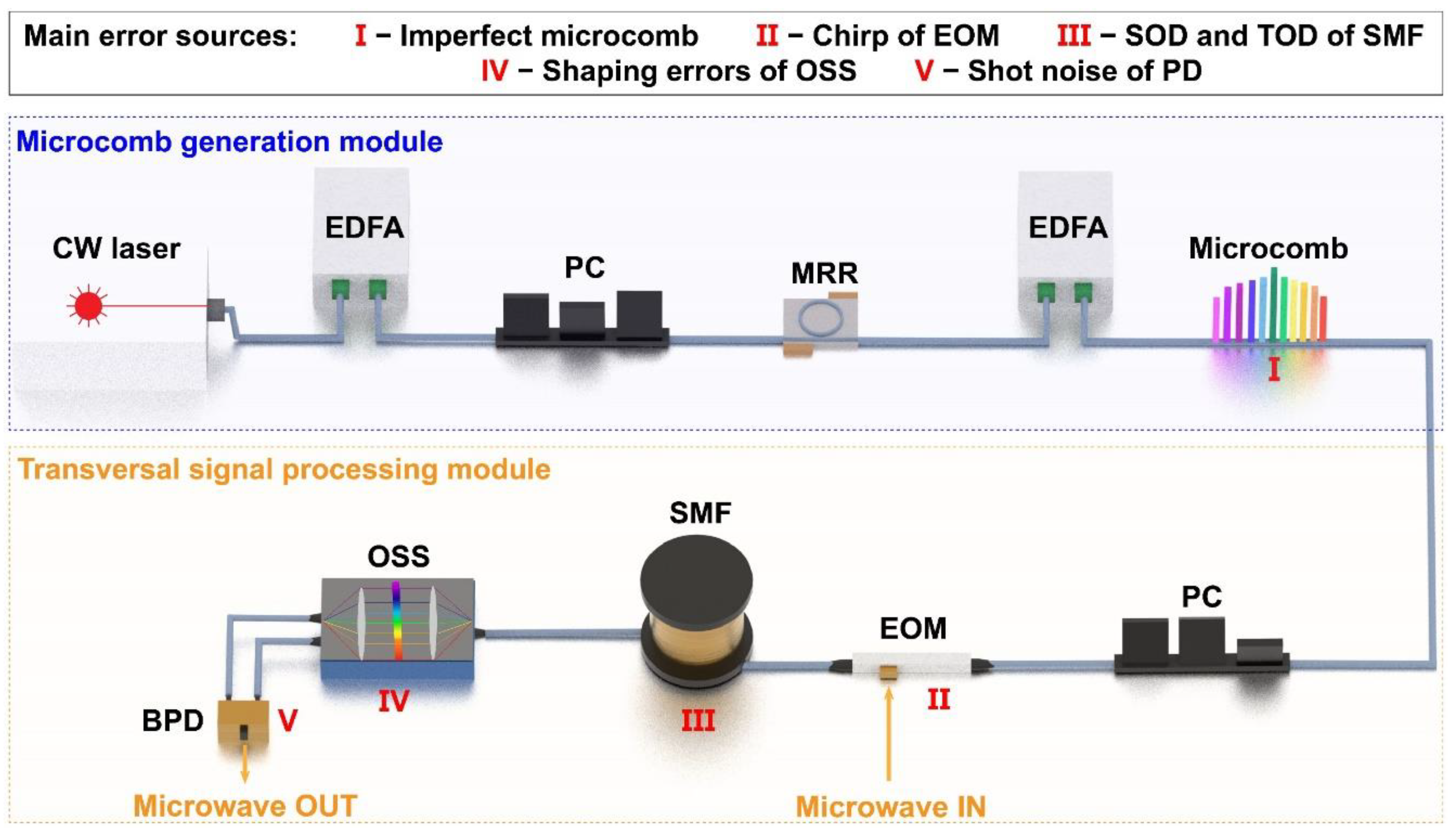
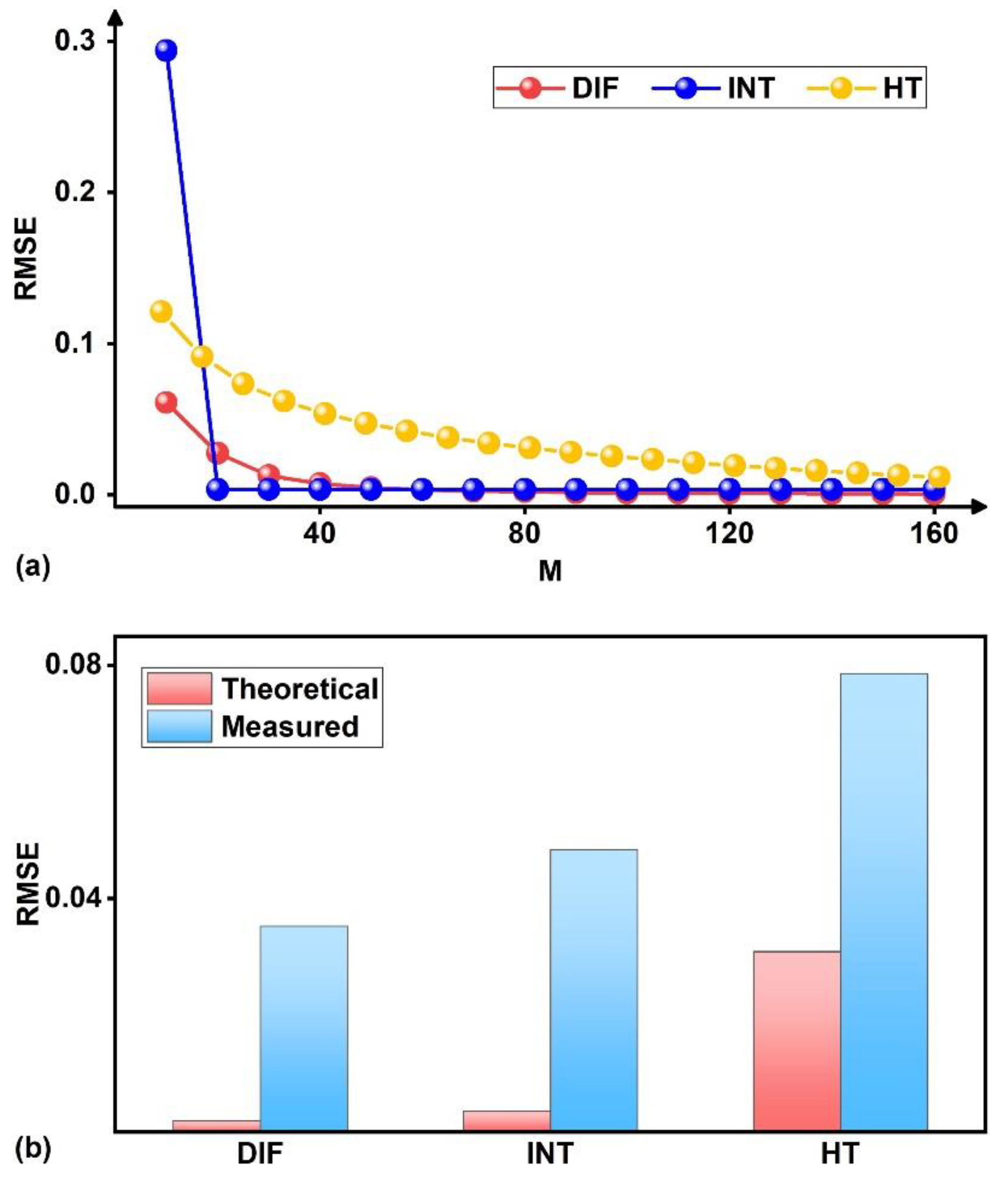
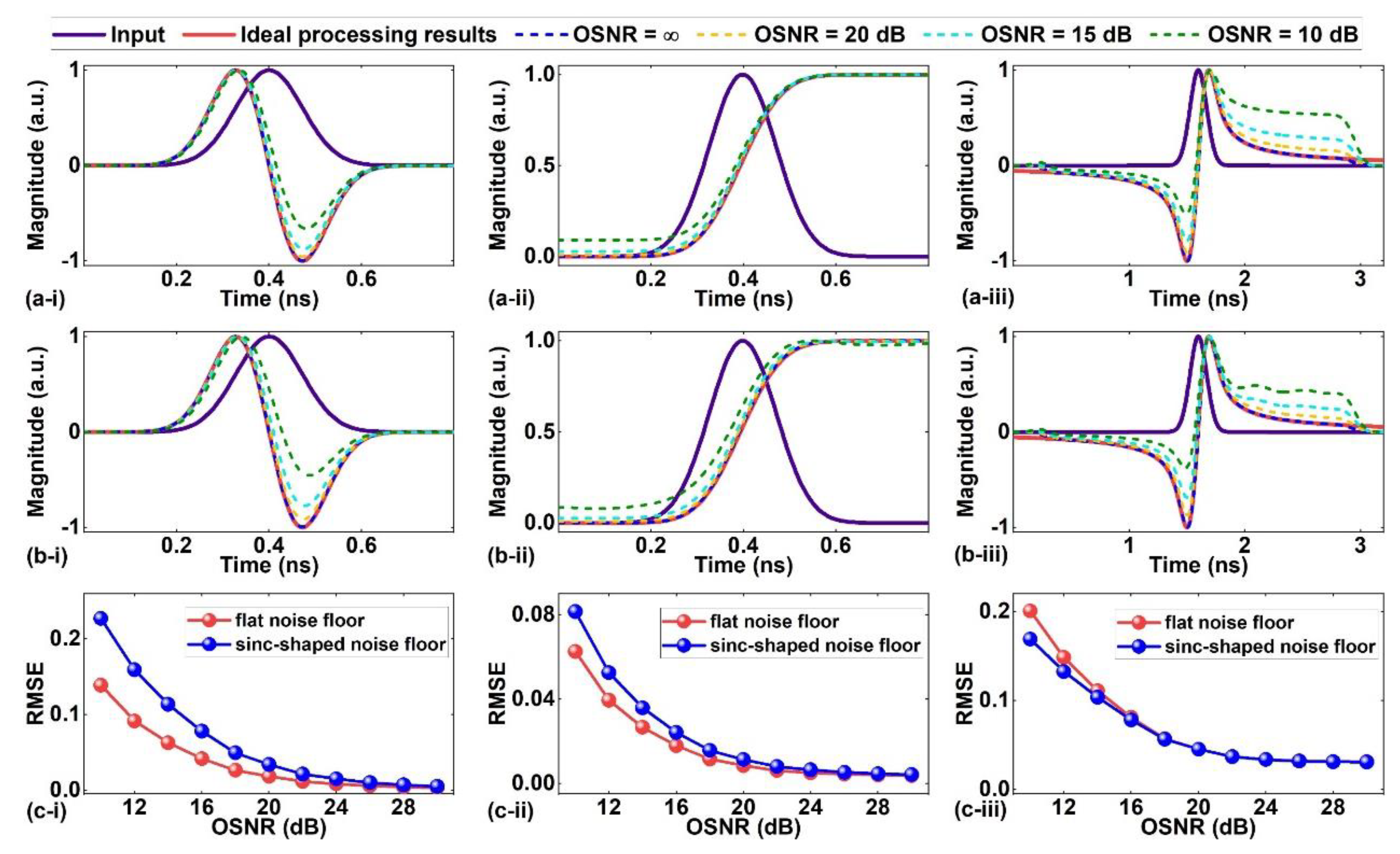
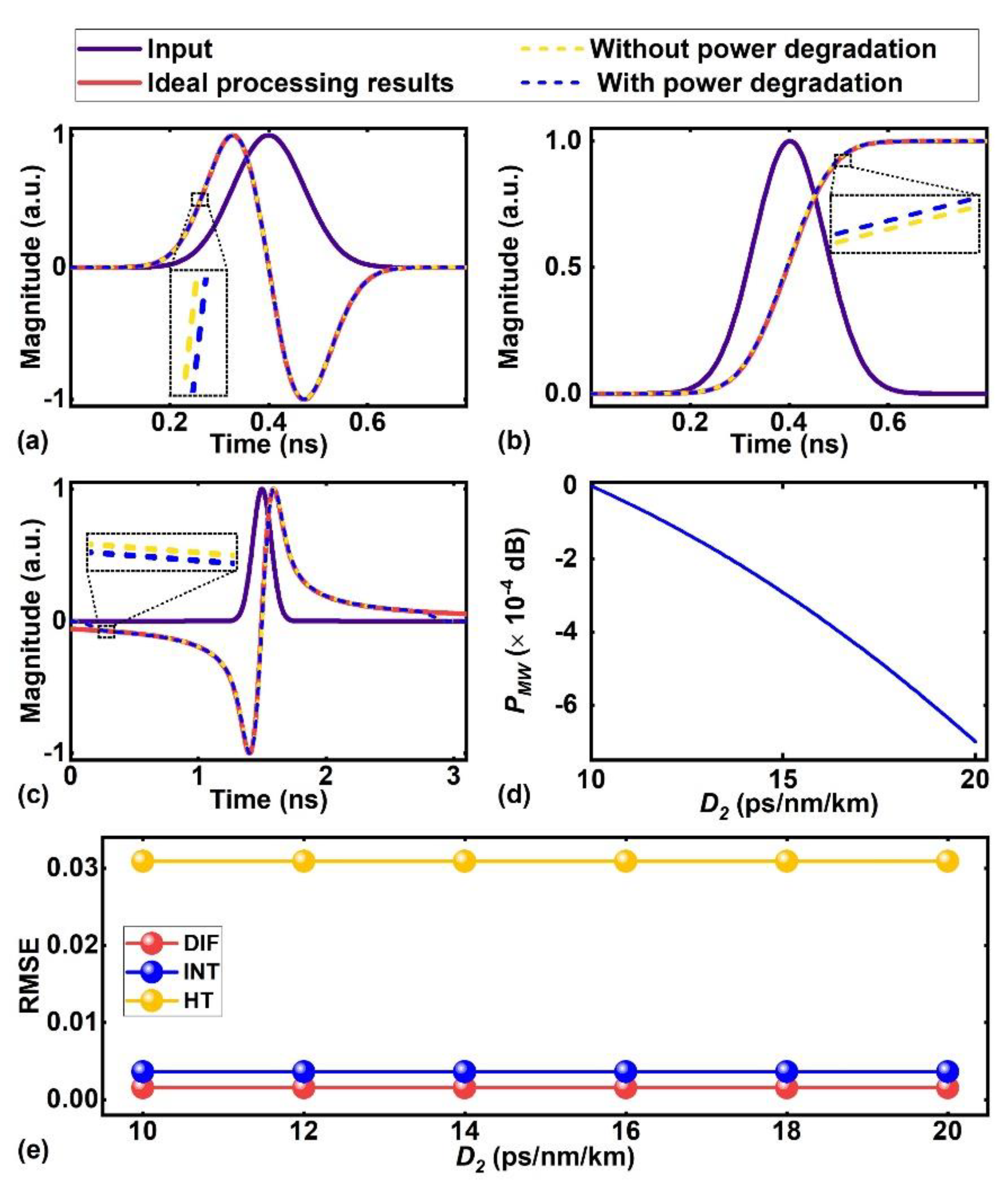

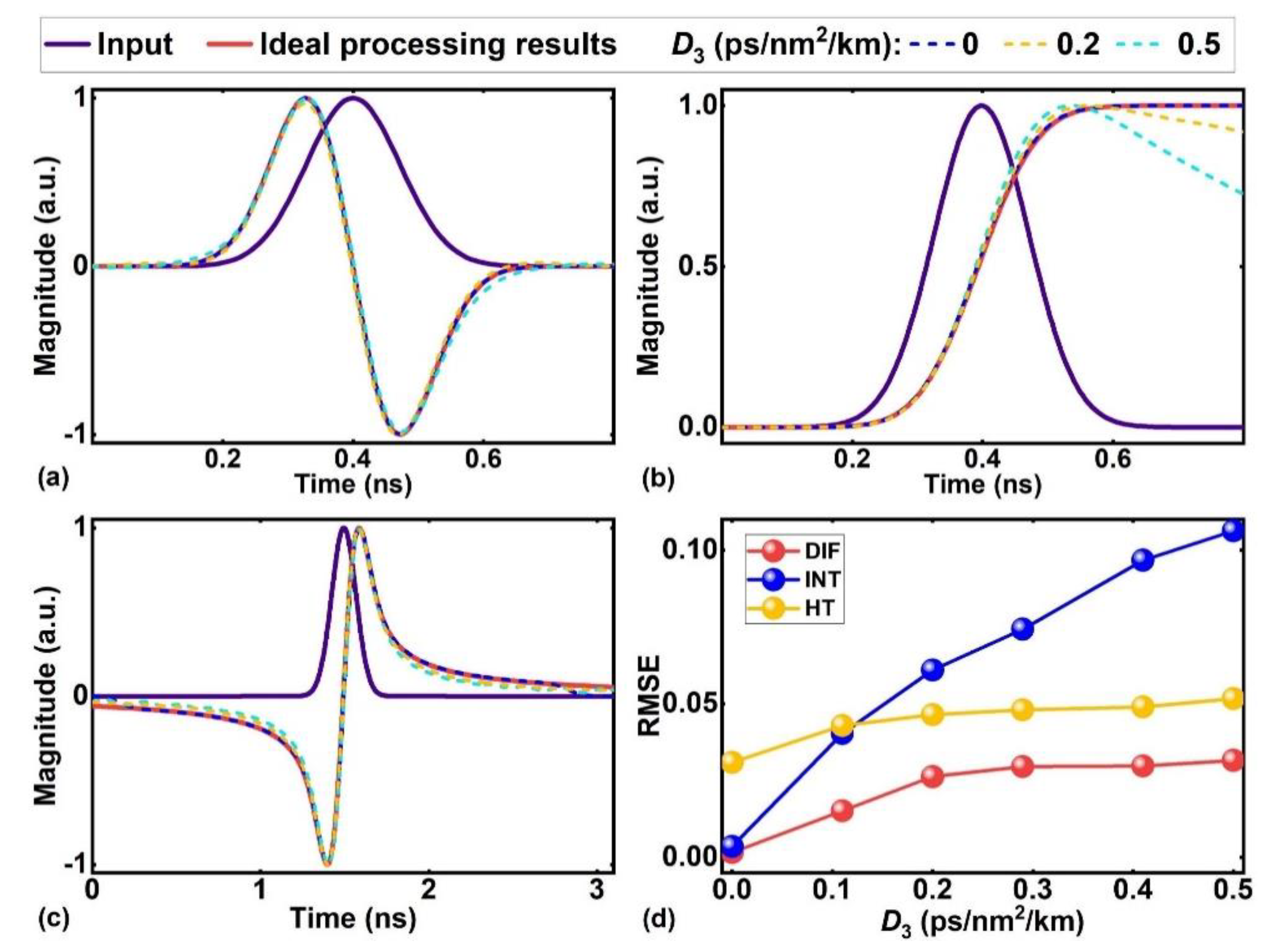
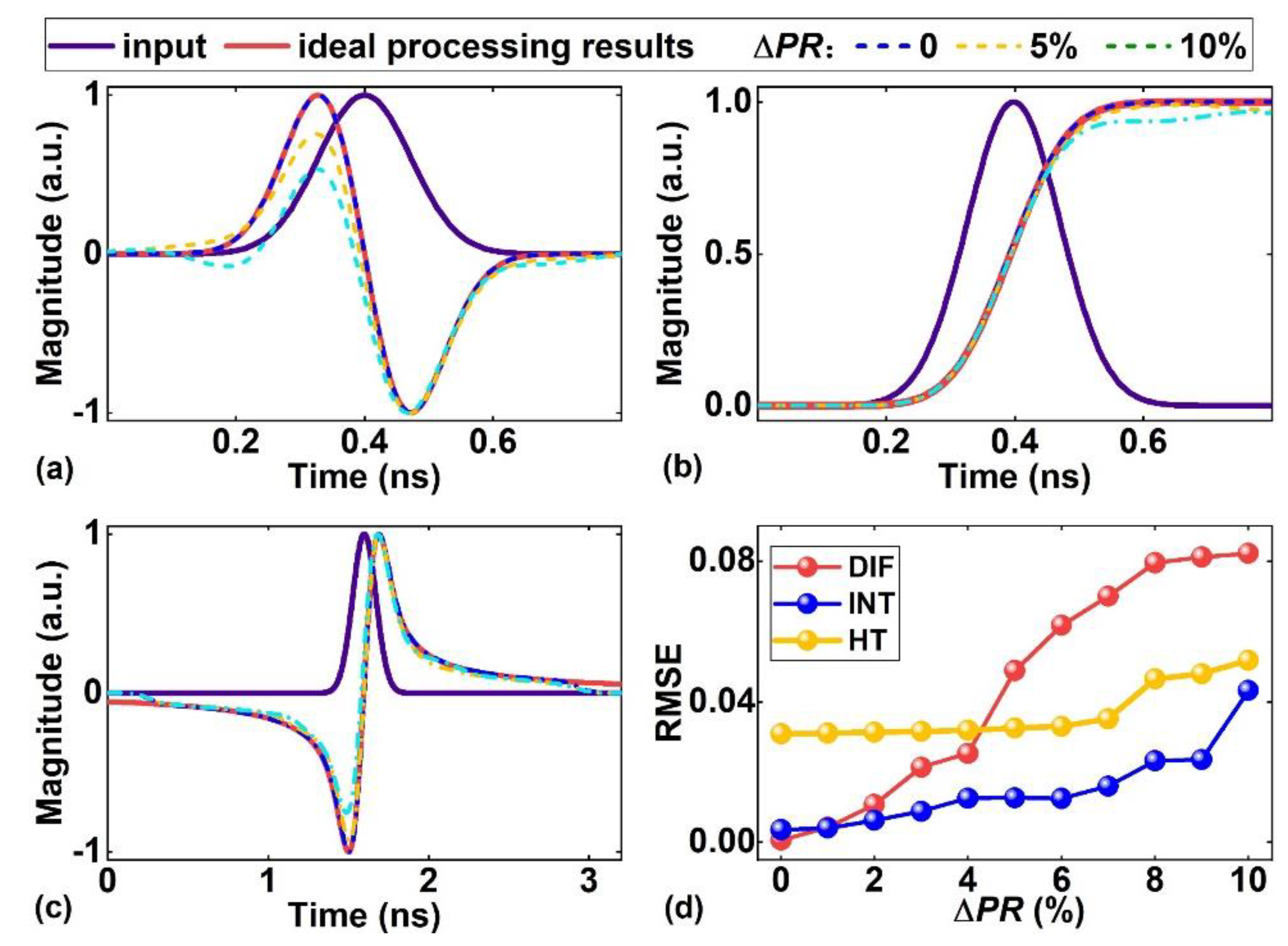
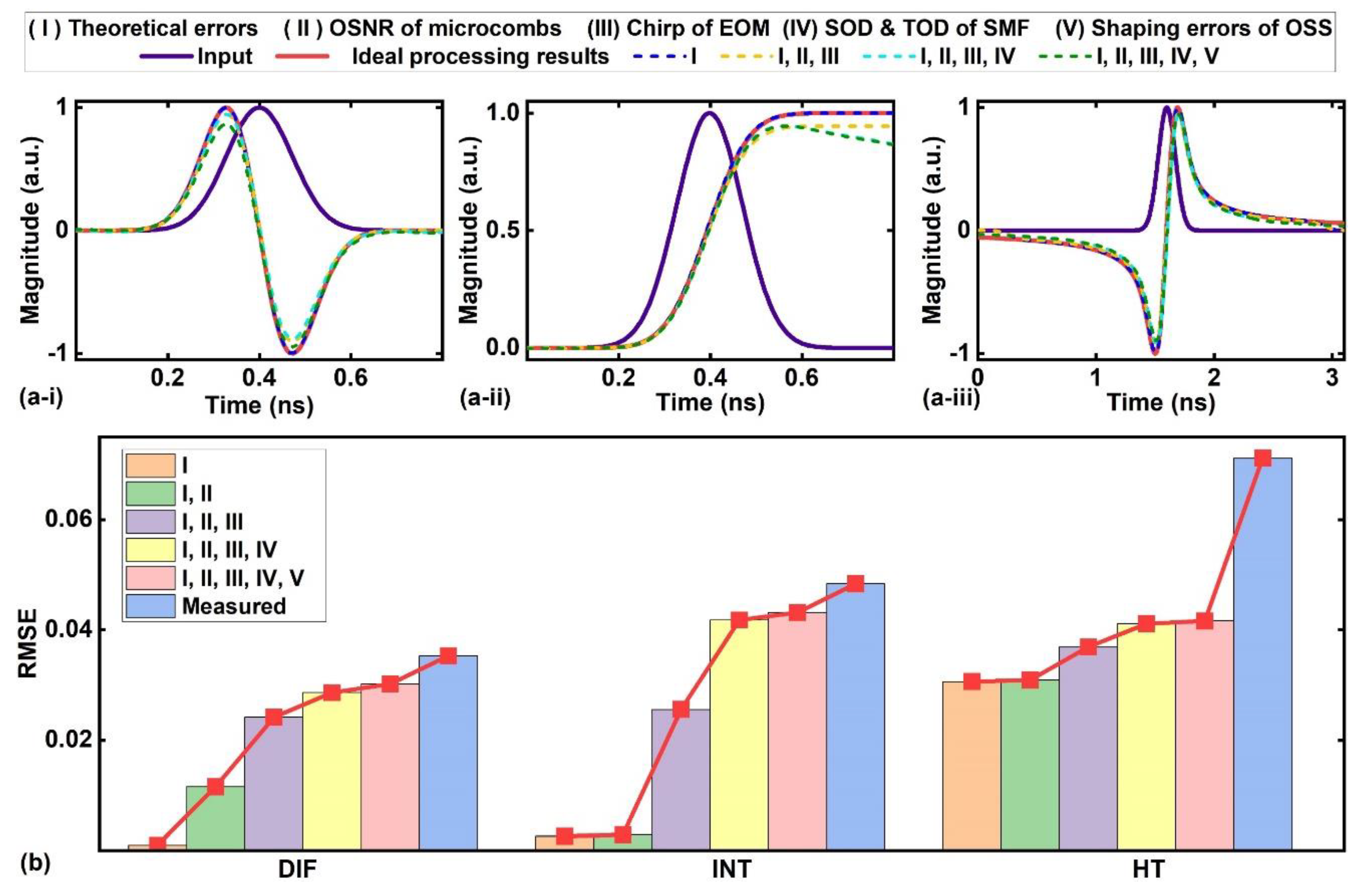
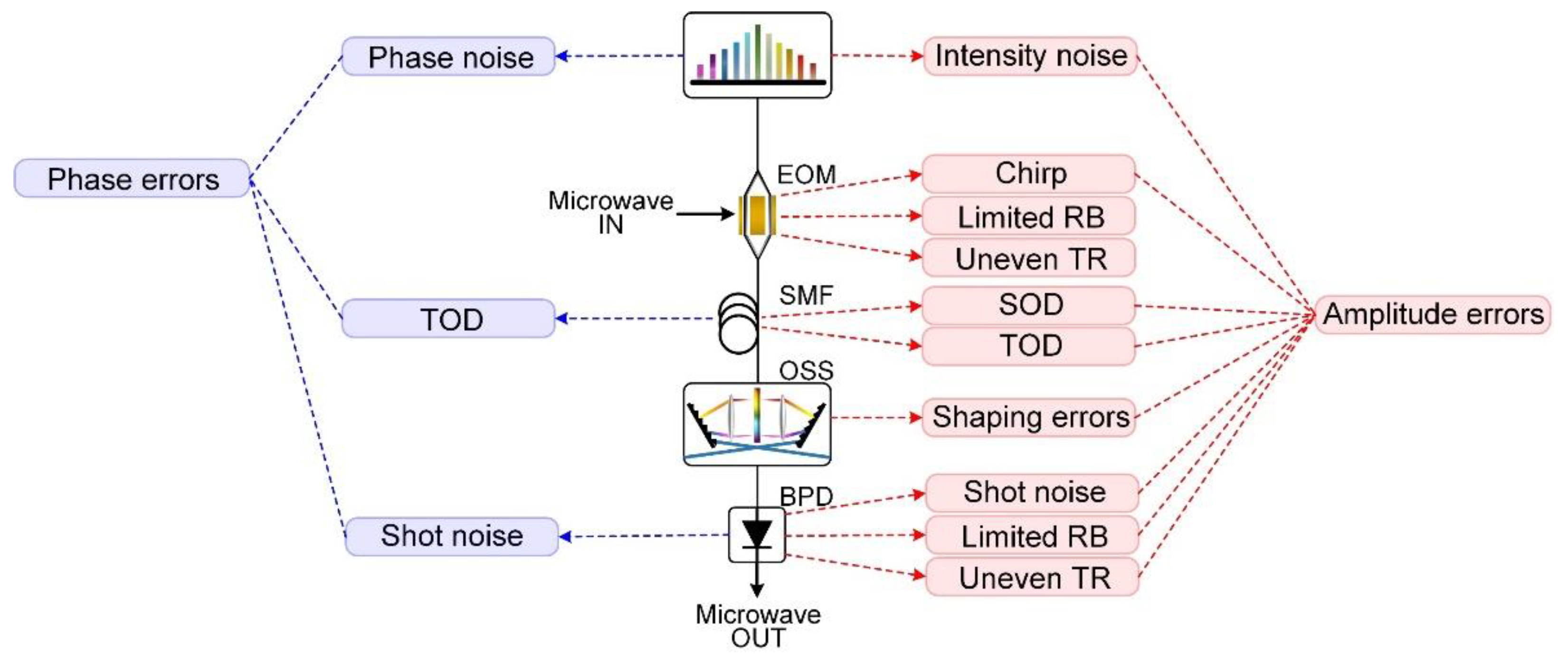
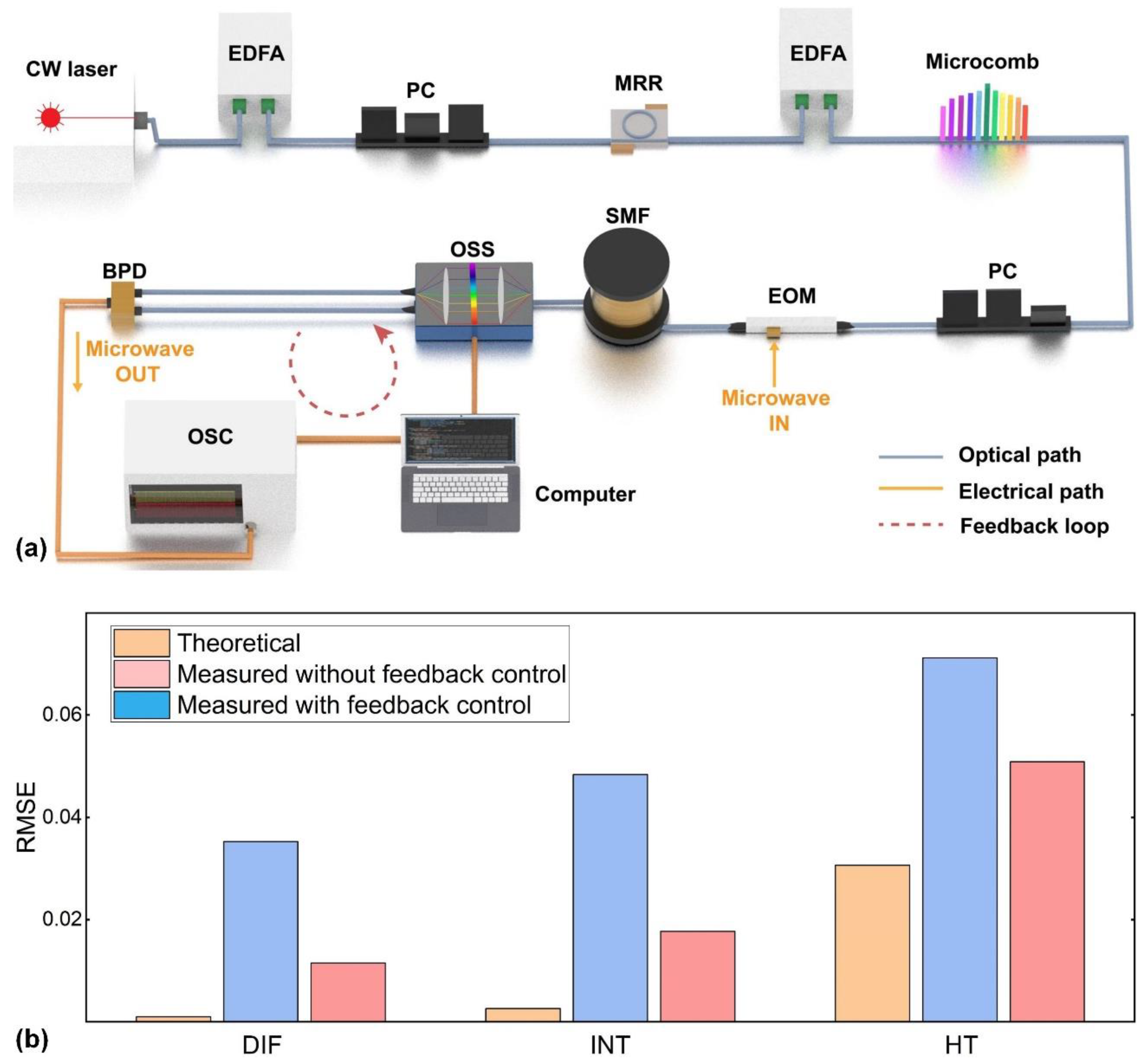
Disclaimer/Publisher’s Note: The statements, opinions and data contained in all publications are solely those of the individual author(s) and contributor(s) and not of MDPI and/or the editor(s). MDPI and/or the editor(s) disclaim responsibility for any injury to people or property resulting from any ideas, methods, instructions or products referred to in the content. |
© 2023 by the authors. Licensee MDPI, Basel, Switzerland. This article is an open access article distributed under the terms and conditions of the Creative Commons Attribution (CC BY) license (http://creativecommons.org/licenses/by/4.0/).



